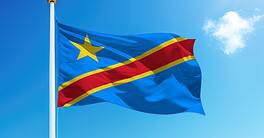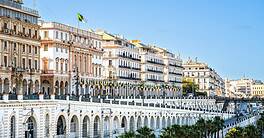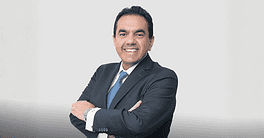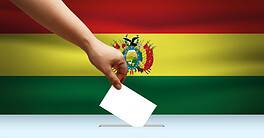Morocco’s growth will continue to slow in 2019 but its strengths point to an acceleration down the road.
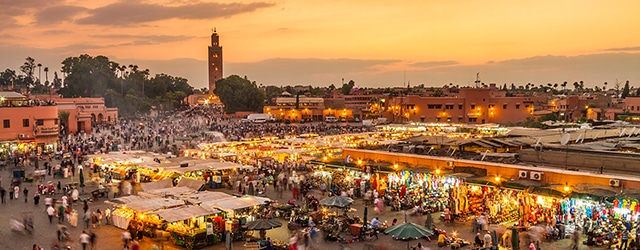
When Fitch Ratings reaffirmed its BBB- rating for Morocco in April, the ruling confirmed a diagnosis of “generally healthy,” albeit with lingering weaknesses. Fitch reinforced its analysis in January, predicting a shrinking fiscal deficit, and again in late April, predicting falling inflation.
|
UKRAINE: VITAL STATISTICS |
|---|
|
Location: North Africa |
|
Neighbors: Algeria, Western Sahara, Spain |
|
Capital city: Rabat |
|
Population (2018): 36,191,805 |
|
Official language: Arabic |
|
GDP per capita (2018): US$3,292.40 |
|
GDP growth (2017): 3.1% |
|
Inflation (2017): 1.3% |
|
Currency: Moroccan dirham |
|
Investment promotion agency: Moroccan Investment Development Agency |
|
Investment incentives available? Subsidies, tax breaks, some exemptions from customs duties |
|
Ease of Doing Business rank (2018): 60 |
|
Corruption Perceptions Index rank (2018): 73 |
|
Political risks: Dispute with Algeria over Western Sahara |
|
Security risks: Some threat of terrorism; some political unrest |
|
PROS |
|---|
|
Government is working to promote economic diversification |
|
Strong commitment to expanding agricultural and mining sectors and fighting organized crime |
|
Restoration of historic sites likely to attract increased tourism |
|
CONS |
|---|
|
Theft of intellectual property |
|
High unemployment and low salaries in the public sector believed partially responsible for bribery |
|
High unemployment has led to large-scale migration, although that has produced inflows from remittances, estimated at $7.4 billion in 2018 by the World Bank |
|
Sources: Daily Sabah Business, Fitch Ratings, Fund for Peace Fragile States Index Annual Report 2019, International Monetary Fund, Moody’s Investors Service, Morocco World News |
|
For more information, check out Global Finance‘s Morocco Economic Report data page. |
The Moroccan economy rests on four pillars, with a fifth one gradually taking shape, explains Lebanese-born Atif Kubursi, professor emeritus of Economics at McMaster University and former acting executive secretary of the United Nations Economic and Social Commission. Taken together, the five pillars lay a promising foundation for diversified growth.
First, Morocco has about 75% of the world’s reserves of phosphate—a major and critical ingredient in fertilizers, Kubursi notes.
Second, the tourism industry “has been doing very well,” he adds, with easy and quick travel from Spain, Portugal, France and the Gulf countries helping attract visitors from Europe and the Middle East, in addition to tourists from elsewhere. With well-developed infrastructure, including 130,000 hotel beds, exotic Morocco attracts more than 10 million tourists each year, injecting about $10 billion into the economy. “It has contributed in a very substantial way to the economy,” Kubursi says.
The third pillar is the agricultural sector, which has provided an estimated 250,000 new jobs during the past 10 years and is targeted for further growth by the World Bank and Morocco government.
The fourth pillar is energy. Morocco supplies energy generated from solar sources to Europe via undersea cables, and has ambitious plans to increase these exports.
Finally, the manufacturing sector, while not yet a serious contributor to Morocco’s gross domestic product, is targeted for growth, driven primarily by clothing, food processing and fertilizers.
However, Morocco’s macroeconomics do raise some red flags. The Fitch report pointed to weak development, high levels of public debt and large budget and current account deficits.
Notwithstanding the government’s well-known commitment to reforms, the uneven distribution of economic benefits is “one of the biggest challenges in Morocco,” according to Intissar Fakir, a fellow at the Carnegie Endowment for International Peace in Washington. She points to problems such as salary scales that vary widely between regions. “A lot of the problems are indications of basically governance [issues].”
While Morocco is currently stable, it was ranked the 78th most-fragile country of 178 countries in the Fragile States Index published by the Fund for Peace, which considers cohesion, political, social and other factors in its ranking. The report, previously called the Failed State Index, places Morocco in the “elevated warning” category.
Moreover, Morocco’s exports could suffer due to Brexit. The United Nations Conference on Trade and Development estimates that Morocco could lose over $97 million in exports if the UK leaves the European Union without a clear deal.
Some problems have economic, political and social implications all at the same time. Morocco annexed two-thirds of the territory now known as the Western Sahara in 1976 and the remainder in 1979. Backed by Algeria, the Polisario Front has campaigned against Morocco’s authority in the territory. Meanwhile, the government has spent heavily there to increase the loyalty of the population. That has meant payments and subsidies not available to other Moroccan citizens and that, in turn, leads to inequity within the population, Fakir says.
